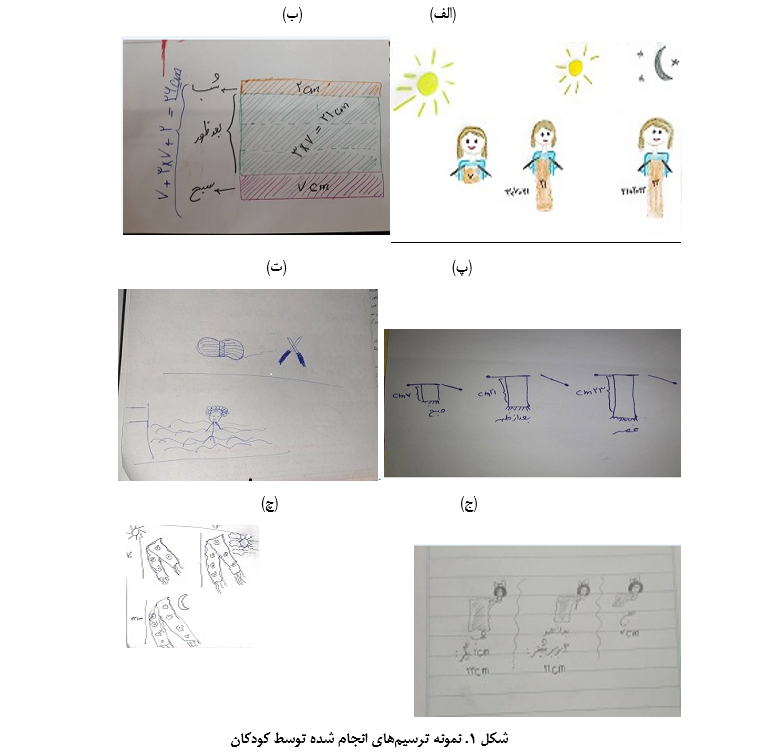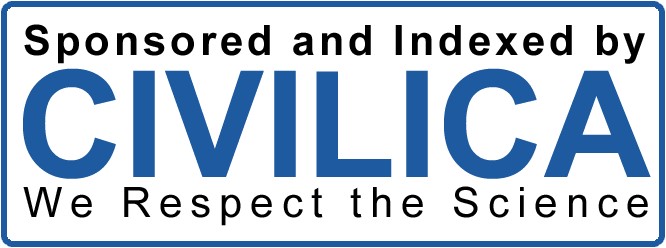ارتباط بین بازنماییهای تولید شده دانشآموزان و توانایی حل مسأله در آنها
کلمات کلیدی:
ساختار ریاضی, تطابق ریاضی, درجه انتزاع, حل مسئله کلامی, بازنمایی تولید شدهچکیده
هدف این پژوهش بررسی ارتباط بین بازنماییهای تولید شده دانشآموزان و توانایی حل مسأله در آنها میباشد. در این پژوهش ویژگیهای گرافیکی تولید شده (ساختار ریاضی، تطابق ریاضی، درجه انتزاع) دانشآموزان بر اساس چارچوب معرفی شده توسط اوت(2016) در حل مسائل کلامی ریاضی مورد بررسی قرار گرفت. در این مطالعه از طرحها و ترسیمهای دانشآموزان به عنوان بازنماییهای گرافیکی استفاده گردید. در این مطالعه 73 دانش آموز پایه چهارم شرکت کردند. دادهها از طریق پیشآزمون و پس آزمون جمعآوری شد. آزمونها از 8 مسئله کلامی طراحی شد و پس از پیش آزمون مداخلهای دو هفتهای برگزار شد. هر هفته به دانشآموزان 4 مسئله کلامی ریاضی داده شد و از آنها خواسته شد بر اساس مدل ککس (1999) بازنمایی گرافیکی برای آن رسم کنند که شامل همه مواردی بود که برای درک مسئله لازم است و سپس مسئله را حل کنند از برخی دانشآموزان خواسته شد که اگر تمایل داشتند بازنمایی و راهحل خود را در کلاس ارائه دهند. یافتههای این مطالعه نشان داد که بازنماییهای تولید شده دانشآموزان به تسهیل فرایند حل مساله کمک میکند.
دانلودها
مراجع
Bortz J, Schuster C. Statistik für Human- und Sozialwissenschaftler [Statistics for human and social scientists]. 7 ed.
Berlin, Heidelberg: Springer; 2010.
Roth WM, McGinn MK. Inscriptions: Toward a theory of representing as social practice. Review of Educational
Research. 1998;68(1):35-59. doi: 10.3102/00346543068001035.
Dörfler W. Mathematical reasoning: Mental activity or practice with diagrams. In: Niss M, editor. ICME 10
proceedings, regular lectures, CD-Rom. Roskilde, Denmark: Roskilde University and IMFUFA; 2008. p. 17.
Heinze A, Star JR, Verschaffel L. Flexible and adaptive use of strategies and representations in mathematics education.
Zentralblatt für Didaktik der Mathematik. 2009;41:535-40. doi: 10.1007/s11858-009-0214-4.
Hembree R. Experiments and relational studies in problem solving: A meta-analysis. Journal for Research in
Mathematics Education. 1992;23(3):242-73. doi: 10.5951/jresematheduc.23.3.0242.
Fagnant A, Vlassis J. Schematic representations in arithmetical problem solving: Analysis of their impact on grade 4
students. Educational Studies in Mathematics. 2013;84:149-68. doi: 10.1007/s10649-013-9476-4.
Lopez Real F, Veloo PK. Children's use of diagrams as a problem-solving strategy. In: Hirabayashi N, Shigematsu L,
editors. Proceedings of the Seventeenth International Conference for the Psychology of Mathematics Education. Tsukuba,
Japan: University of Tsukuba; 1993. p. 169-76.
Van Essen G, Hamaker C. Using self-generated drawings to solve arithmetic word problems. Journal of Educational
Research. 1990;83(6):301-12. doi: 10.1080/00220671.1990.10885976.
Goldin GA, Shteingold N. Systems of representations and the development of mathematical concepts. In: Cuoco A,
Curcio FR, editors. The roles of representation in school mathematics. Reston, VA: National Council of Teachers of
Mathematics; 2001. p. 1-23.
Van Garderen D, Montague M. Visual-spatial representations and mathematical problem solving. Learning
Disabilities Research & Practice. 2003;18:246-54. doi: 10.1111/1540-5826.00079.
Munez D, Orrantia J, Rosales J. The effect of external representations on compare word problems: Supporting mental
model construction. The Journal of Experimental Education. 2013;81(3):337-55. doi: 10.1080/00220973.2012.715095.
Schipper W. Handbuch für den Mathematikunterricht a Grundschulen. Braunschweig, Germany: Schroedel; 2009.
Verschaffel L, Greer B, De Corte E. Making sense of word problems. Lisse, the Netherlands: Swets & Zeitlinger
Publishers; 2000.
Haghverdi M, Wiest LR. The Effect of Contextual and Conceptual Rewording on Mathematical Problem-Solving
Performance. Mathematics Educator. 2016;25(1):56-73.
Sturm N. Problemhaltige Textaufgaben lösen. Wiesbaden, Germany: Springer Spektrum; 2018.
Cox R. Representation construction, externalised cognition and individual differences. Learning and Instruction.
;9:343-63. doi: 10.1016/S0959-4752(98)00051-6.
Larkin JH, Simon HA. Why a diagram is (sometimes) worth ten thousand words. Cognitive Science. 1987;11:65-99.
doi: 10.1111/j.1551-6708.1987.tb00863.x.
Pantziara M, Gagatsis A, Elia I. Using diagrams as tool for the solution of non routine mathematical problems.
Educational Studies in Mathematics. 2009;72:39-60. doi: 10.1007/s10649-009-9181-5.
Van Dijk IMAW, Van Oers B, Terwel J. Providing or designing? Constructing models in primary maths education.
Learning and Instruction. 2003;13:53-72. doi: 10.1016/S0959-4752(01)00037-8.
Hegarty M, Kozhevnikov M. Types of visual-spatial representations and mathematical problem solving. Journal of
Educational Psychology. 1999;91(4):684-9. doi: 10.1037/0022-0663.91.4.684.
Ott B. Textaufgaben grafisch darstellen: Entwicklung eines Analyseinstruments und Evaluation einer
Interventionsmaßnahme. Münster, Germany: Waxmann; 2016.
Ott B. Children's drawings for word problems - Design of a theory and an analysis tool. In: Dooley T, Gueudet G,
editors. Proceedings of the Tenth Congress of the European Society for Research in Mathematics Education (CERME10,
February 1-5, 2017). Dublin, Ireland: DCU Institute of Education and ERME; 2017. p. 3984-91.
VanMeter P, Garner J. The promise and practice of learner-generated drawing: Literature review and synthesis.
Educational Psychology Review. 2005;17(4):285-325. doi: 10.1007/s10648-005-8136-3.
Palmer SE. Fundamental aspects of cognitive representation. In: Rosch E, Lloyd BB, editors. Cognition and
categorization. Hillsdale, NJ: Lawrence Erlbaum Associates; 1978. p. 259-303.
Kirsch A. Mathematik wirklich verstehen. 3 ed. Cologne, Germany: Aulis-Verlag Deubner; 1997.
Peschek W. Untersuchungen zur Abstraktion und Verallgemeinerung. In: Dörfler W, editor. Kognitive Aspekte
mathematischer Begriffsentwicklung. Vienna, Austria: Hölder-Pichler-Tempsky; 1988. p. 127-90.

دانلود
چاپ شده
ارسال
بازنگری
پذیرش
شماره
نوع مقاله
مجوز
حق نشر 2025 نشریه پژوهش و نوآوری در تربیت و توسعه

این پروژه تحت مجوز بین المللی Creative Commons Attribution-NonCommercial 4.0 می باشد.










